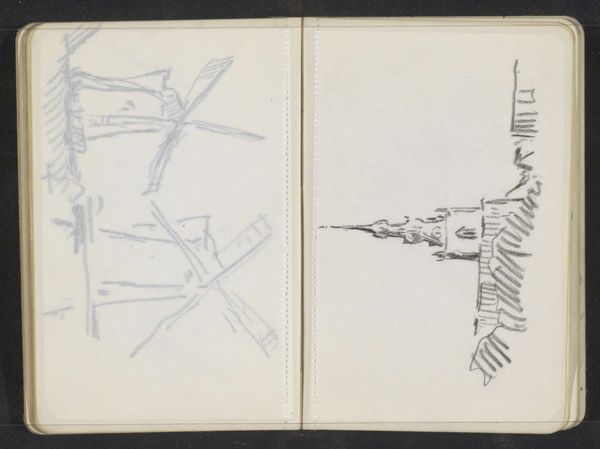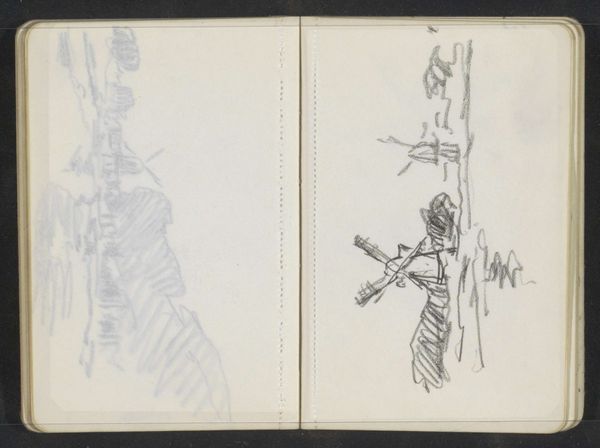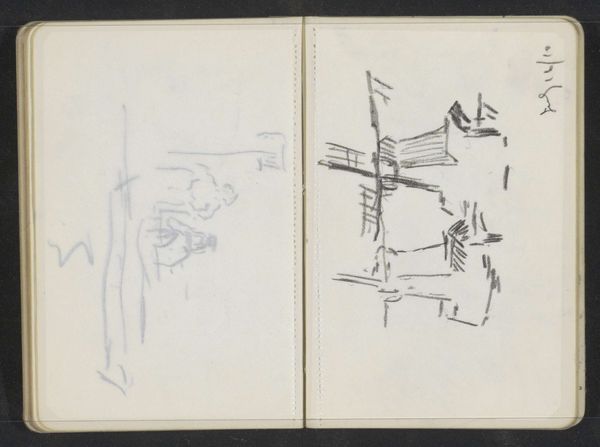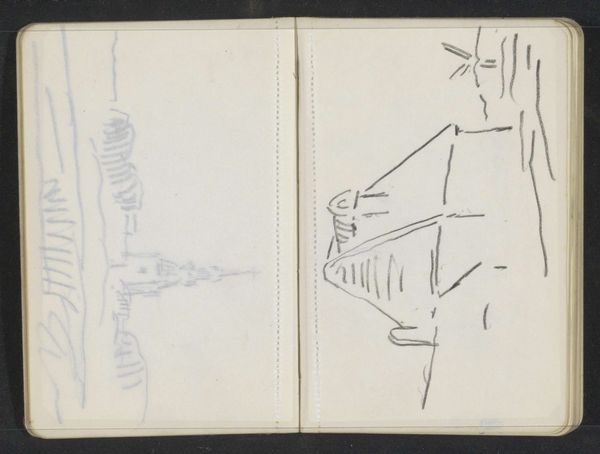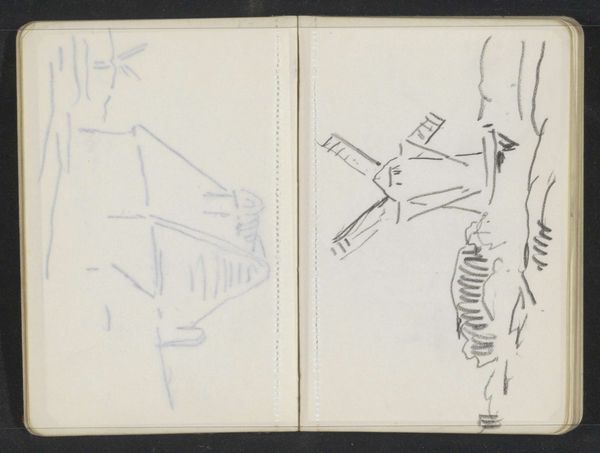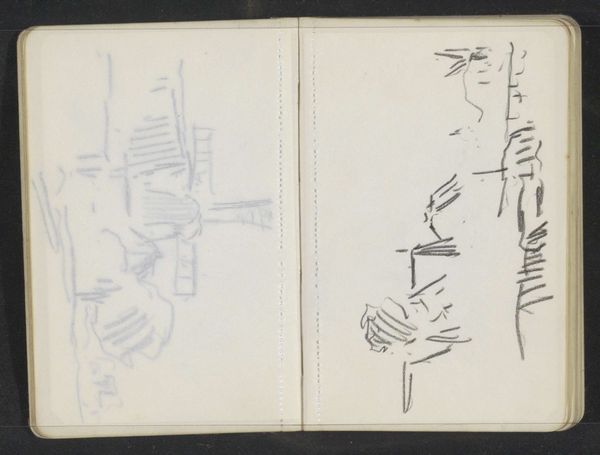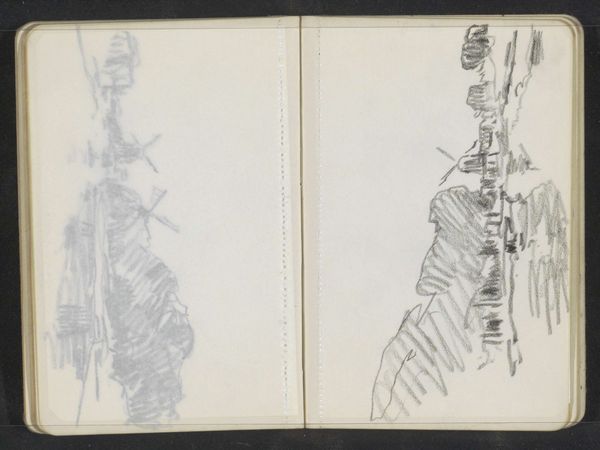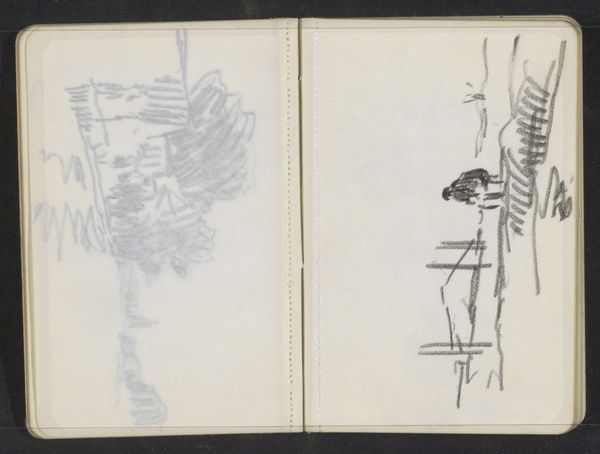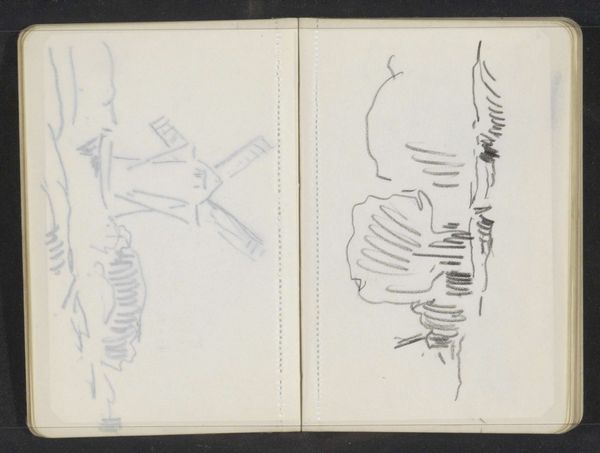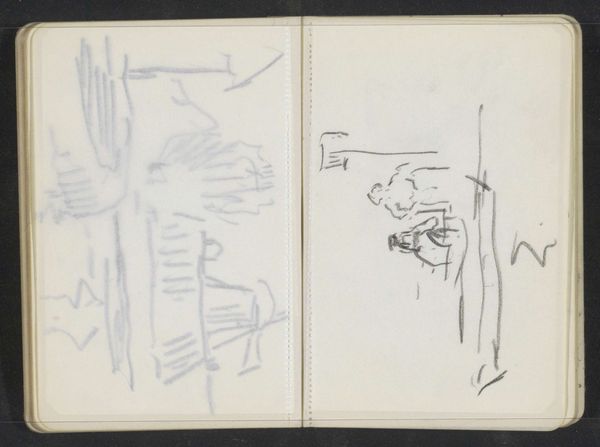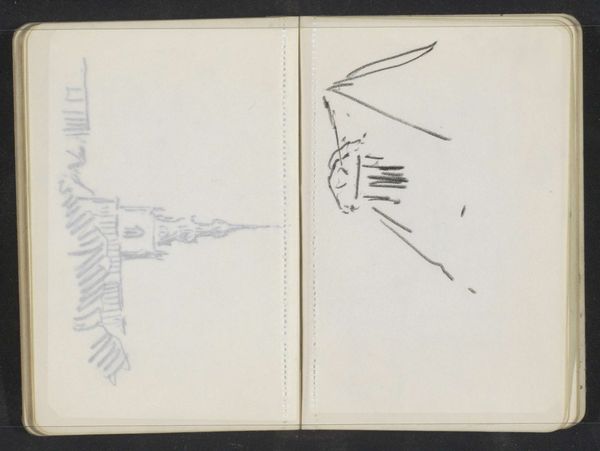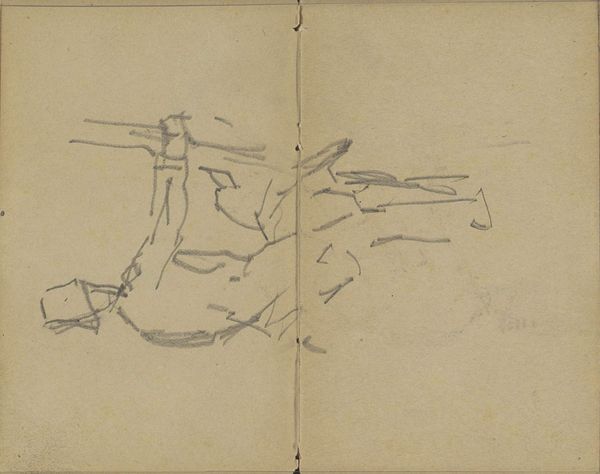
drawing, pencil
#
drawing
#
light pencil work
#
pen sketch
#
sketch book
#
hand drawn type
#
landscape
#
personal sketchbook
#
hand-drawn typeface
#
sketch
#
pen-ink sketch
#
pencil
#
pen work
#
sketchbook drawing
#
sketchbook art
Copyright: Rijks Museum: Open Domain
Curator: This delicate sketch is called "Twee molens," or "Two Mills," attributed to Alexander Shilling and created circa 1909. It's a drawing, seemingly in pencil, within a sketchbook. My immediate impression is one of quiet observation. The stark white of the page contrasts beautifully with the confident, yet spare, strokes of the pencil. Editor: There's a melancholic atmosphere too, I think, especially when you consider the period. Around 1909, the industrial revolution was drastically altering landscapes worldwide. Windmills, once vital for community power, were quickly becoming relics. Curator: Indeed. Observe how the composition favors the materiality of the windmills—their angular architecture, and the geometric pattern formed by the blades dominating the pictorial space. It’s almost a study in pure form. Note the interplay between positive and negative space created by the delicate lines. Editor: Yet, doesn’t the sketch’s apparent unfinished nature underscore a larger narrative of displacement and loss? The loose lines and fleeting details could reflect the precarious position of these structures at the turn of the century, fading into obsolescence. It also hints at the rapid pace of modernity's encroachment upon agrarian life. Curator: That’s certainly a valid reading. From a purely formal perspective, however, the asymmetry and the varying line weights create a subtle dynamism. The light pencil work beautifully captures a sense of ethereal transience. Editor: But can we ignore that these "mills" were often cornerstones of rural communities? Their decline meant a loss of local autonomy and sustainability, a shift to dependence on larger, external economic structures. Shilling’s sketches become a poignant, quiet lament for that bygone era. These weren't just pretty objects; they represented a way of life. Curator: Perhaps, and yet Shilling's ability to render light and shadow through such sparse means remains a remarkable achievement. His understanding of form, line, and perspective invites viewers into the internal logic of representation itself. Editor: Agreed. Ultimately, though, this sketch is a microcosm of a larger societal shift—a visual elegy for a changing world, documented in the fleeting strokes of a pencil. Curator: A delicate sketch offering us a glimpse into both the architecture of the windmill and the artistry of rendering.
Comments
No comments
Be the first to comment and join the conversation on the ultimate creative platform.
